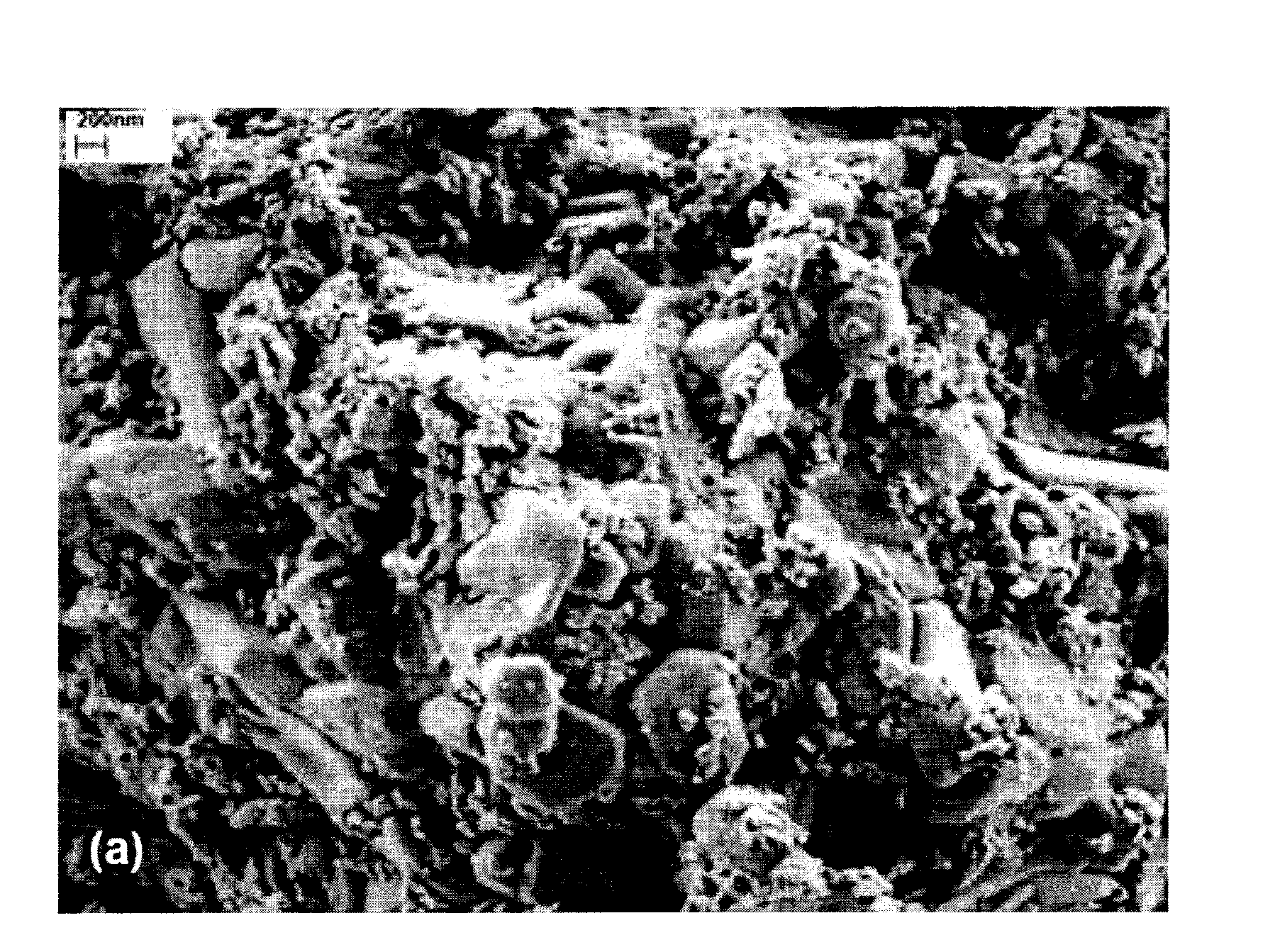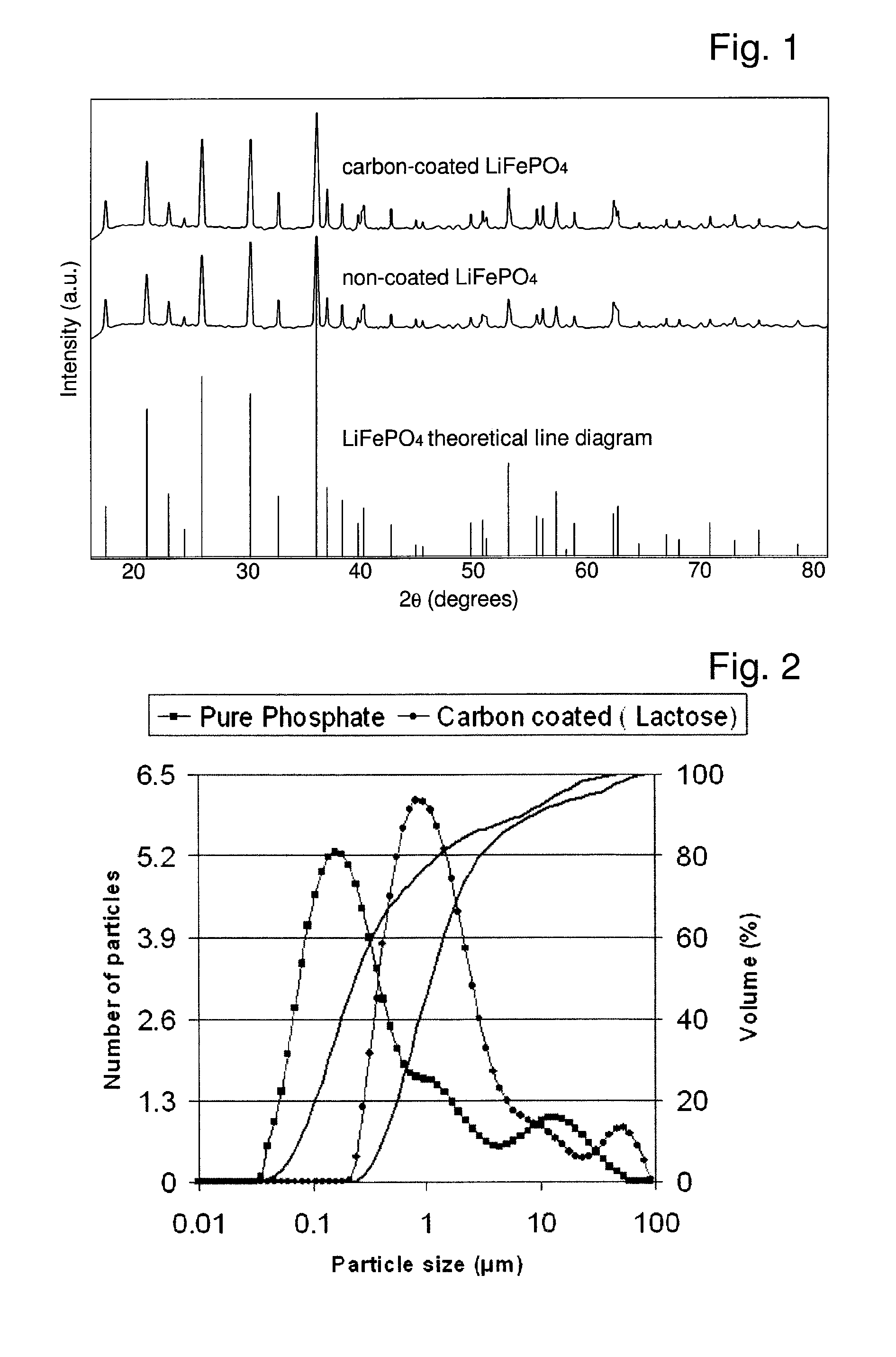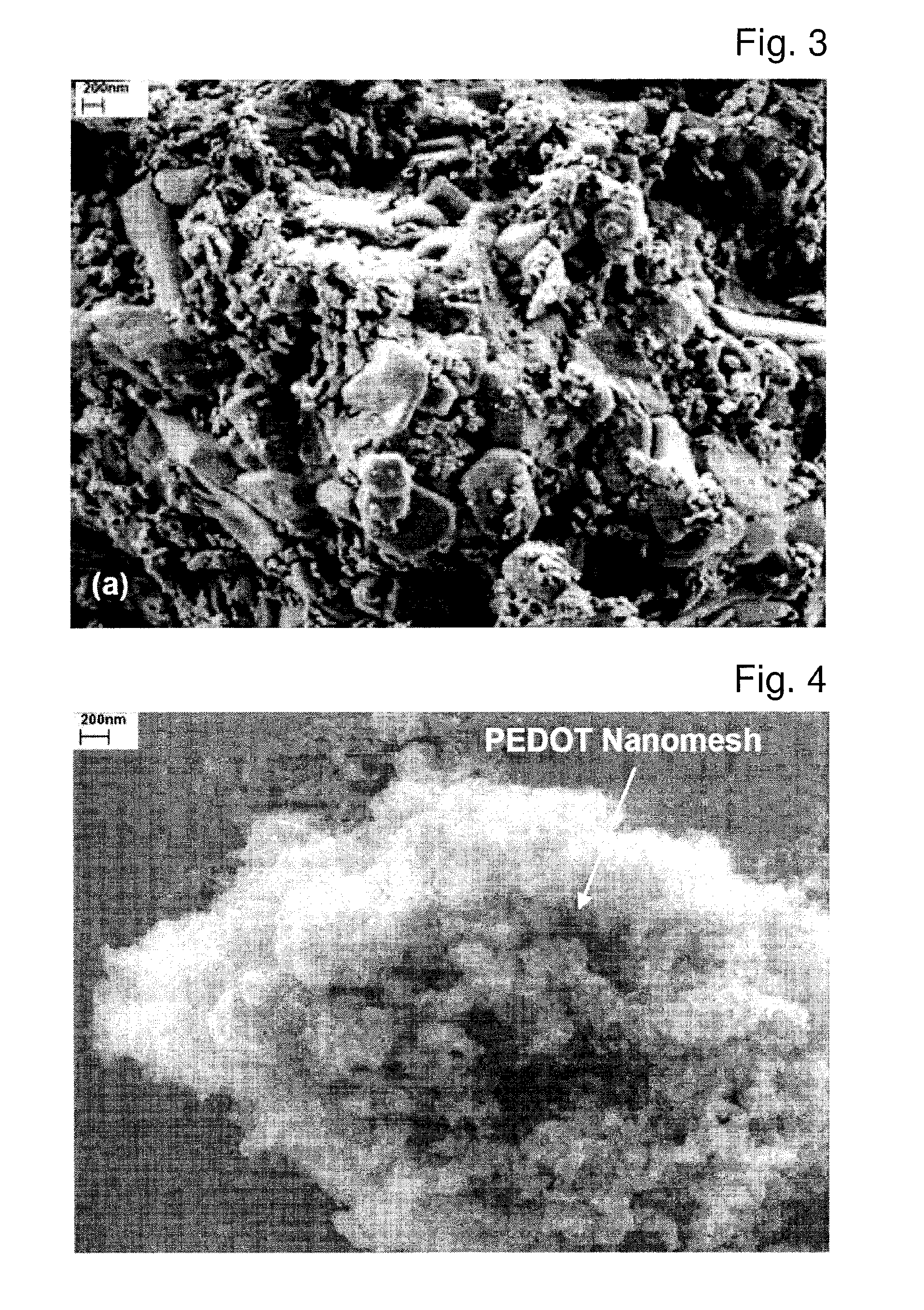Open porous electrically conductive nanocomposite material
a nano-composite material and open porous technology, applied in the field of open porous electrically conductive nano-composite materials, can solve the problems of high demand for these batteries, insufficient comparatively high value of 99%, and inability to meet the requirements of electrode manufacturing,
- Summary
- Abstract
- Description
- Claims
- Application Information
AI Technical Summary
Benefits of technology
Problems solved by technology
Method used
Image
Examples
Embodiment Construction
[0045]The invention will now be further described for the system LiFePO4 and PEDOT.
[0046]LiFePO4 is a very promising EAM because it can be produced from inexpensive precursors, is of nontoxic nature, environmentally benign and has remarkable chemical and thermal stability. The material facilitates exceptionally fast lithium ion mobility making it desirable for high power application [3]. However, the low intrinsic electronic conductivity of this material severely limits its electrochemical response [3]. Several attempts to improve its properties have been made such as reducing its particle size [4-6], coating with ultra thin carbon [7], doping with supervalent ions [8], adding metallic particles in the electrode composite [9] are some of the methods that all did not lead to acceptable let alone good results.
[0047]The most significant enhancement in the performance of LiFePO4 has been obtained by surface coating it with carbon deposited via pyrolysis of various organic precursors suc...
PUM
| Property | Measurement | Unit |
|---|---|---|
| particle size | aaaaa | aaaaa |
| particle size | aaaaa | aaaaa |
| pressure | aaaaa | aaaaa |
Abstract
Description
Claims
Application Information
 Login to View More
Login to View More - R&D
- Intellectual Property
- Life Sciences
- Materials
- Tech Scout
- Unparalleled Data Quality
- Higher Quality Content
- 60% Fewer Hallucinations
Browse by: Latest US Patents, China's latest patents, Technical Efficacy Thesaurus, Application Domain, Technology Topic, Popular Technical Reports.
© 2025 PatSnap. All rights reserved.Legal|Privacy policy|Modern Slavery Act Transparency Statement|Sitemap|About US| Contact US: help@patsnap.com



